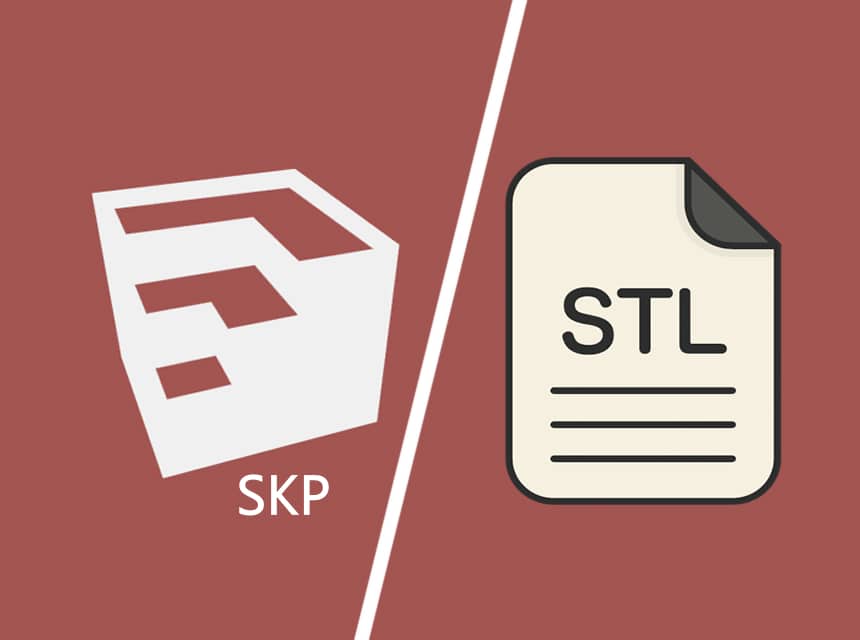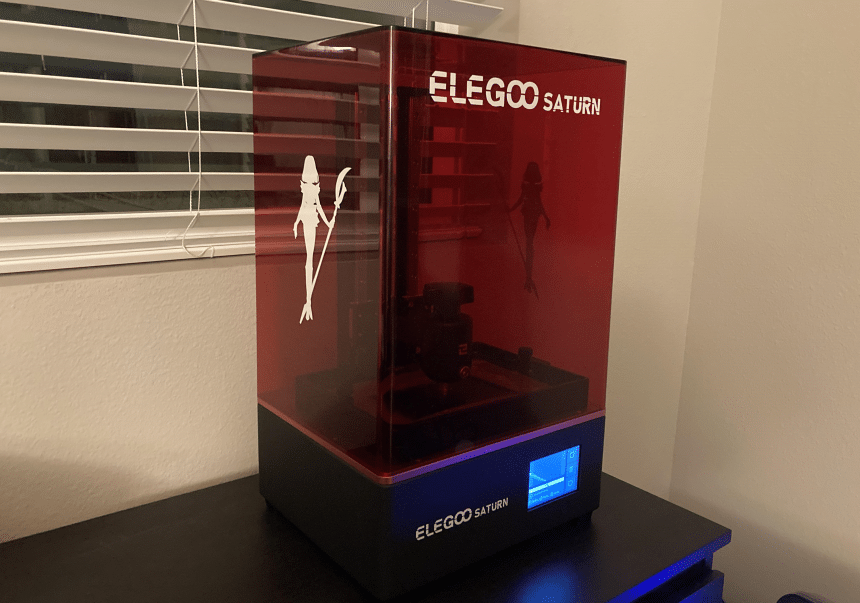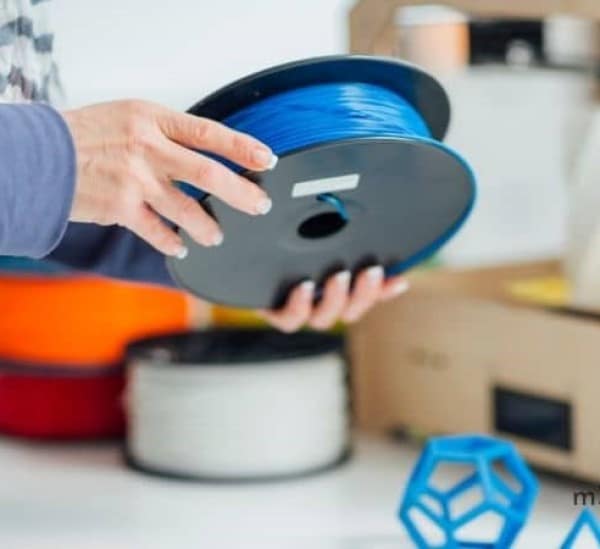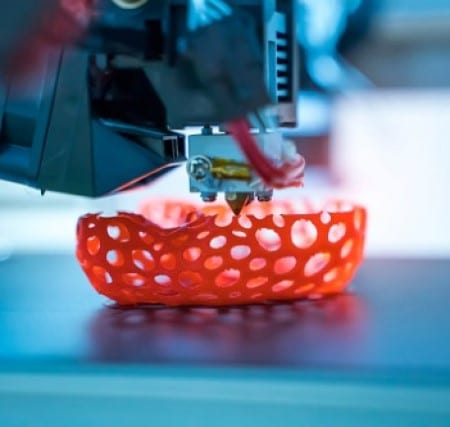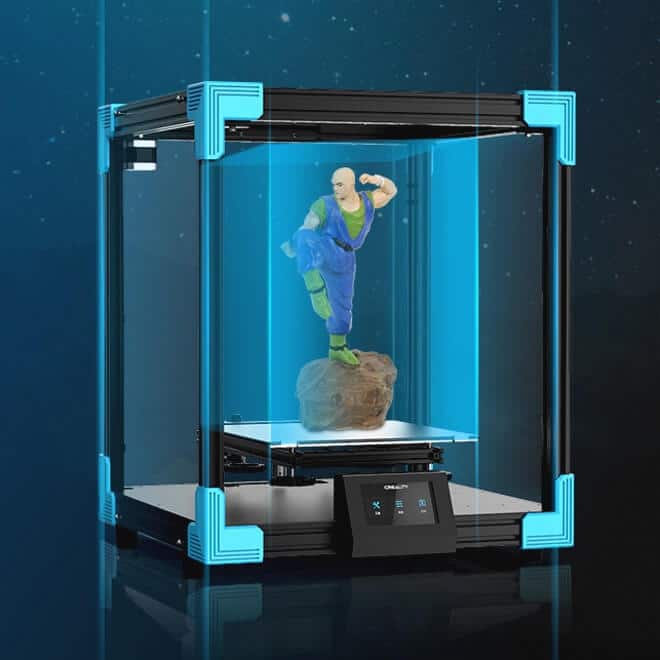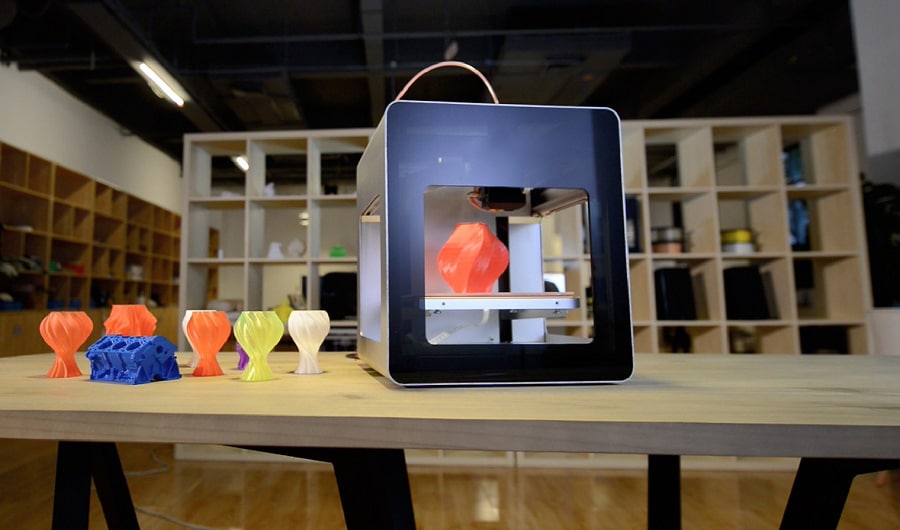

What are some of the things that would pull you to buying one particular 3D printer and not the other? Is it the design, its filament, the price tag, or its rating? Well, a 3D printer offers you a world filled with unrivaled realities and excitement. To fully enjoy using your printer, you will need to explore the many features it has.
In this review of the best 3D printer under 1000 dollars, we have taken a more in-depth look into each one’s features. Whether you are a hobbyist or a professional workshop, your 3D printer should feature the good qualities that will enable you to put it into proper use. Among the things to consider are the different filament types, the maximum build size your printer has to offer, and its overall dimensions. It also goes without saying that the printer’s weight, together with the manufacturer’s warranty, are other important factors that you should consider. Without much ado, let us dive into exploring the best inexpensive 3D printers on the market. Based on that, our Editor’s Choice nomination goes to the QIDI TECH X-Plus.
More features: double Z axis platform, heated removable plate, 1.75 mm filament diameter, 0.4 mm max layer thickness
When it comes to 3D printing, you deserve the very best. Why not go for the QIDI TECH X-Plus? This printer, which measures 26 x 22 x 22.5 inches, weighs 50.6 lbs. It presents you with a maximum build size of 10.6 x 7.9 x 7.9 inches. QIDI TECH X-Plus is the best inexpensive 3D printer bearing in mind that it boasts a cool design and many great features.
As for the filament, it is compatible with all brands of 1.75mm, while at the same time, it can take complex materials such as nylon and carbon fiber. The maximum thickness of a layer from this printer is 0.4 mm. The technology employed in making the X-Plus is such that the printer quiet and promotes air purification. The manufacturer has also included a Wi-Fi connectivity feature and one-button quick leveling. It is indeed one of the best 3D printers under $1,000, given that it is suitable for use in educational institutions, engineering, and product development as well as hobbyists and home users.
When printing using 3D technology, you need to maintain the internal temperature of the printer constant. To this end, QIDI has included two different ways by which you can place the filament. You can opt for the ventilative or the enclosed constant temperature printing method when printing any of the different filaments you have.
What we liked: The printer can print in temperatures as high as 300 degrees Celsius. The unit also uses the latest slicer software version 5.0.
What could be better: Though everything about this 3D printer is awesomely good, we have to point out that the 4.3” touchscreen is a tad confusing with its reaction to your commands being delayed.
More features: automatic plate leveling sensor, dual y axis motor, 4.3-in HD touch screen, 0.4 mm nozzle diameter
The Creality Ender 5 Plus is an uncomplicated 3D printer that serves its purpose with swank and style. It boasts a few futuristic additions that make it more of a workhorse than an everyday 3D printer. The price tag makes it even more appealing to the 3D enthusiast and the expert in the industry. With build dimensions of 13.7 x 13.7 x 15.7 inches, it is a unit that will allow you to work on almost any type of project. The overall dimensions of the unit are
24.5 x 26.2 x 24.3 inches.
The unit comes with 2 Lead screws placed on the Z-axis, ensuring that the hot bed does not tilt or wobble. This makes it easier to use the printer. There are dual Y-axis motors that help make the Z-axis more stable hence its movements are smoother. This also brings about high precision printing. With the Creality Ender 5 Plus, you get to save time because the Z-axis gets leveling compensation. This is made possible by the BLTouch Auto Bed leveling Sensor.
The manufactured has enabled the filament to work with nylon, carbon fiber, and others. With a wide 4.3 inch HD touchscreen, you get to enjoy a more leisurely time operating as well as assembling the machine. For your safety, the manufacturer has included an extra tampered glass plate on the heated bed, making it easier to remove models.
What we liked: The unit comes with filament detection, which allows you to know when the filament breaks or runs out.
What could be better: Though a grade higher than the Ender 3 Pro, the marketing information is misleading since this unit doesn’t come with the latest Ender technological features.
More features: 397°F extruder temperature, enclosed design, non-heated plate, LCD touch screen, filament detection
In an ever-changing world of technological advancements, you will need a 3D printer that not only makes life more comfortable but is also able to adapt to the changes happening around. The Dremel Digilab 3D20 is a printer that is fully enclosed. This helps create stable temperatures inside the unit, which further maximizes your printing’s success rate. That also serves as a safety feature, which makes it score highly against the competition. The extruder’s temperature can reach up to 230 degrees celsius.
The Digilab 3D20 printer is a workhorse that will work for hours and still produce high-quality models. The unit manufacturer has invested the PLA filament technology, but 3rd party UL is accepted but based on a safety approval. This filament is safe to use at home and around children. The unit’s maximum build size is 9 x 5.9 5.5 inches, giving up to 100-micron resolution. Its compatibility is further accentuated by its overall dimensions of 18.5 x 13.4 x 13.8 inches. It is a light unit weighing only 15.4 lbs.
Installing and using the printer has been made even easier by its open system that allows you to download models from around the web. Moreover, you can use CAD software to create your very own designs. Many people trust the Dremel 3D printers because the brand has been around since 1932.
What we liked: A 1-year warranty backs the printer. Customers also get world-class customer support always.
What could be better: One downside about the unit is that Dremel doesn’t seem enthusiastic to allow you to use other brands’ filament.
More features: dual extruder, Wi-Fi enabled, LCD touch screen, filament detection, copied printing, 6 mm aluminum panel, power-loss printing memory, USB drive and SD-card compatible, 270℃ nozzle temperature
3D printing is an advanced technology, but the BIBO Touch Laser X has taken it to an even higher level. With this printer, you get to enjoy premium features such as copy printing, which allows you to print two same items simultaneously. The printer can also be controlled via WiFi. All these features at a budget price.
The maximum build size of the printer is 8.4 x 7.3 x 6.3 inches. The unit’s overall dimensions are 21.5 x 19 x 17.3 inches and has a weight of 40.1 lbs. With this printer, you get two extruders, and even the ability to continue printing after the power has been cut. To allow you to enjoy the very best of the printer, the manufacturer has added a filament detection sensor. This means that the filament, which has a diameter of 1.75 mm, cannot run out or get damaged without you knowing it early enough.
With the BIBO Touch Laser X 3D printer, you get a print layer resolution of 0.05-0.3 mm. Moreover, the printer’s PLA filament, which weighs 1 kg, comes with a pre-installed G-code program, printing two different colors without changing it.
What we liked: The printer offers a sturdy frame that delivers higher precision and reliability. The other thing we loved about Laser X is its ability to be controlled using Wi-Fi, and the filament is versatile and user friendly.
What could be better: There is nothing to hate about this 3D printer other than its weight, maybe. This becomes a nonissue when you discover the countless features the unit has and at a budget price.
More features: 3.5” HD IPS touchscreen, enclosed design, SD-card port, Wi-Fi connectivity, memory support
After the successful launch and sale of the Creator, Creator X, and Creator Pro, FlashForge presents you with the Dreamer 3D printer. This is a printer that easily outperforms the competition. With a sleek design, this is a printer that appeals to both professionals and novices.
The printer offers a maximum body build size of 9 x 5.9 x 5.5 inches. The manufacturer has further enhanced the printer’s resolution 3.5″ HD IPS color touch screen. The unit’s overall dimensions are 19 x 15.7 x 13 inches, and it’s got a fully enclosed body. This helps at regulating the internal temperature. Its total weight is 35.2 lbs. For ease of using the unit, WiFi connectivity, and a built-in SD port are available. The machine also comes with 4G memory support.
The Dreamer gives you 2 filament spools of 0.6 kg PLA and 0.6 kg ABS. The dual extruders help at making your 3D printing experience easy, safe, and professional. The technology used by FlashForge in making the Dreamer makes the unit compatible with slic3r slicing and Skein forge.
What we liked: The manufacturer has made this 3D printer using the latest technology. As an end-user, you will get a power cord, 4GB SD card, USB cable as part of the accessories. Don’t forget the unit is backed by a 1-year limited warranty and full-time customer support.
What could be better: One can’t argue with the fact that this is one of the best 3D printers on the market. But for this price, the second extruder should not be interfering with the work in progress.
More features: filament detection, dual Z axis, heated plate, LCD screen, metal frame, 0.4 mm nozzle diameter, up to 100 mm per sec printing speed
Once you see the capabilities of the Creality 3D CR-10S, you will understand why it’s one of the best 3D inexpensive printers out there. The printer is a powerhouse that delivers the best modern 3D technology to your office, classroom, or home at a low price. The printer has been built on the successful features of the previous printers the Creality has made.
The CR-10S printer offers a maximum of 15.75 x 12 x 12 inches build size. This makes the 140 square inch build space ideal for all your oversized projects. The unit’s size is 25 x 21 x 11 inches, while its weight is 19.1 lbs.
For a smoother experience of the end-user, Creality has included a filament that can handle ABS, PLA, flexible TPU, wood, nylon, and PETG. The manufacturer has included a filament monitor and a high-tech control board that ensures the continuity of your work even after a power outage. You will love the dual lead screw Z-axis design, bringing more stability and accuracy to the printer. Assembling of the CR-10S has been blissful by Creality as they have made three partially assembled parts. It shouldn’t take you more than 30 minutes to assemble the unit.
What we liked: The oversized bed and the large build size space of the CR-10S allows both professionals and novices to work on a wide range of models.
What could be better: The only downside to owning this printer is that it’s noisy. Also, users point out that delivered product might miss a screw or nut, yet Creality is always ready to remedy that.
More features: LED printing signals, online printing gallery, Wi-Fi connectivity, 100-400 microns resolution
The da Vinci Mini Wireless 3D printer is unique in a plethora of ways. For starters, it offers streamlined printing using its single-button print function. The printer boasts of different colored LEDs that help you determine the printing conditions and levels. The manufacturer has enhanced the printer’s connectivity using the wireless feature. It is a machine that has been designed to transform the way you work and your life.
The da Vinci Mini 3D printer offers a moderate build size that can reach a max of 5.9 x 5.9 x 5.9 inches. The machine’s outer measurements are 15.36 x 14.1 x 13.2 inches while its weight is 17.9 lbs. Its compactness and design make it a good purchase for those starting the 3D printing journey.
With a non-toxic PLA filament derived from natural materials like sugarcane and corn starch, you rest easy knowing that this is one of the best environmentally friendly units. The unit also comes with CAD and slicing software. Moreover, the UI design will guide you step by step from the modeling stage all the way to printing.
What we liked: What one can’t ignore is the fact that this is a green printer which contributes to the reduction of global warming in its small way. The unit’s stylish design and the manufacturer’s support, which can be reached via skype or telephone, serves to make the printer appealing.
What could be better is that it is only compatible with specific filament materials, making it a less attractive printer to some users. You also can’t control the print speed while the machine is already printing.
More features: enclosed design, dual extruder, built-in camera, Wi-Fi connectivity, USB cable, 3.5-in touchscreen, 6.5 mm alloy build plate
For the best 3D printing outcome, you will need a quality printer. Well, get true value for your money by buying the Monoprice MP230 Dual Extruder. This printer, which is fully enclosed, enables it to control the printing process by preventing any dust or moisture. This feature also prevents temperature fluctuations. Being enclosed also makes the unit ideal for a wide range of environments.
With this printer, you get a maximum build size area measuring 9 x 5.9 x 6.2 inches, which is relatively more extensive than most printers in this class. Its overall size is 19.1 x 13.5 x 15.8 inches while its weight is 23.6 lbs. The unit comes armed with dual extruders, which allow for dual-color printing without the need of changing the filaments mid-print.
The manufacturer has used 6.5mm thick alloy to build its unwarping plate. This plate can handle temperatures as high as 115 degrees Celsius. You’ll love this printer, even more when you discover that you can use any filament type. It can take PLA, ABS, and complex materials such as copper fill, bronze fill, and wood. The manufacturer has included a built-in auto-resume feature, which helps prevent your work from getting ruined when there is a power blackout.
What we liked: You definitely can’t pretend that the built-in camera the printer comes with isn’t awesome. This camera, together with a Wi-Fi radio, lets you monitor prints using your mobile phone and from anywhere.
What could be better: Like most 3D printers, you will need to tweak the MP230 with the simple G-Code for it to perform exemplary.
More features: UI and USB port, 2K masking LCD panel, 3.5 in touchscreen, 8-15 seconds per layer printing speed, adjustable layer resolution
A moderately large 3D printer with 2K resolution and delivering Highly-detailed prints, the SainSmart Kumitsu KL9 is an excellent machine to print most of what you have in mind. This printer measures 23.6 x 17.6 x 16.6 inches and boasts 4.72 x 7.56 x 9.84 inches as body build dimensions. This allows you to enjoy a wide range of exciting possibilities like printing toys, jewelry, and large models with ease.
The printer can allow you to put all your printing ideas and imagination into reality. This Kumitsu printer is truly the best 3D printer for miniatures. It’s more than capable of producing smooth finishes. This is made all the more possible by its 2K masking LCD. Kumitsu has installed a large screw and a dual Z-axis linear rail, eliminating wave patterns.
With a speed of 8-15 seconds per a single layer, the KL9 is equipped to handle all your 3D printing fantasies. The filament used by the printer is 405 nm UV resin, but it can accept third party resins too. The unit offers an adjustable layer resolution of between 0.025 and 0.2 mm. It boasts of a UI and USB connectivity, as well as a 3.5-inch touchscreen.
What we liked: With an ability to open OBJ/ STL and AMF files and compatibility with Linux, Mac OS, and Windows, there is little not to like about this unit. Don’t forget there is a whole set of accessories that come with the unit.
What could be better: There is nothing not to like about the KL9 printer; however, the price tag it carries may not be the best for a beginner or someone on a budget.
Ever since the 3D printing technology came about, there hasn’t been a moment when the hobbyists, industry leaders, and innovators have gone quiet. From a small niche to a multi-billion industry, 3D printing is where the world is headed to.
It is now possible to own a 3D printer with just 1000 or just a fraction of that much in most cases. However, to get the best value for your money, you will need to know their features and what they can or can’t do. This way, you are guaranteed to get the best inexpensive 3D printer.
3D printing technology was a preserve of the industry nerds and the very rich. To get started in 3D then, you were required to cough several thousands of dollars. Today, the arena is a bit brighter. With just $200-300, you can set off on a journey of printing great stuff.
Here are some of the reasons why you need a 3D printer;
3D printing sounds very foreign and sophisticated to many people. However, it is not complicated or hard at all. To get your first print, the first thing to do is to set up your printer. This should be followed by downloading a 3D model, which should then be converted into printer instructions. Once this is done, send these instructions to your printer and begin printing.
But before you jump into the actual printing process, you need to familiarize yourself and hopefully master terms such as stereolithography, which is STL when shortened. This is a 3D model ready for 3D printing. You will need to know where you can get the STL files too.
Other things to look into are G-code and slicing. After getting a suitable STL file, it is now time to convert it into 3D printing instructions. Depending on the type of printer you have and the materials you are using to print, these instructions vary. G-code is simply a set of instructions that your printer follows. These are step-by-step instructions more like a cooking recipe. In this G-code, the speed, direction, temperature, and flow rate instructions are found. You can do away with the STL file once you have the G-code for your printer. As for ‘slicing,’ this is the term used to refer to the process of converting the STL files into 3D printer G-code.
Making your first 3D print
We have picked our preferred printer, sliced it into G-code, and are now ready for the next step. At this stage, we are required to send the G-code instructions to the printer, which can take any of the following paths;
If you are using an SD, which happens to be the most straightforward method, navigate to your G-code and opt for print. Using the manufacturer’s instructions, insert the plastic filament. When using a computer, you can take control of the printer via the computer. This allows you to use any slicing tool you choose. The computer should remain on and connected to the printer the entire printing duration. Lastly, you can go with a printer control system, which means you can control the printer over a network. However, there should be some initial configuration.
After pressing the ‘Print’ button, you will hear the printer coming to life almost immediately.
The market price of 3D printers has always remained an issue for hobbyists and professionals. In the recent past, the price of 3D printers has been coming down. This has led to the everyday enthusiast wanting to own one. However, the budget printer’s price, usually $1,000 and below, tends to give lesser quality outputs. For those that cost above $2000, their end product quality tends to be of better quality.
Still, this does not mean that you should overlook the $100 3D printer. As a beginner, you should start with a simple, cheap, but good quality model like the BIBO2 Touch Laser X or the Creality Ender 5 Plus that go for less than $600.
Don’t forget that the 3D printers’ popularity is on the rise, which means heavy competition, leading to better quality and stiffer price wars. Even though we are not yet fully there, a professional can get an inexpensive $1000 3D printer today. The Dremel DigiLab 3D20, QIDI Tech and the FlashForge Dreamer printers will not disappoint both hobbyists and those who want to advance in their 3D printing careers. The Creality CR-10S is a good investment for a person who wishes to be printing large models. In the end, the price carried by printer matches the technology and the features such a 3D printer bears. However, as a professional, take a keener look at the specific features, and you will be surprised to find your perfect printer in the best 3D printer under $1,000 category.
You have heard about 3D printing, and you are asking yourself what you are waiting for. While 3D printing and 3D printers have now become common in our world, they were a preserve of the hardcore makers and slews in the past. With the price and the technology becoming increasingly accessible, it is not uncommon to come across a 3D printer at your friend’s house. But just as is the case with every purchase, you must first establish what features an excellent 3D printer comes with and what specific features apply to your needs. Let’s look at some of the important features you must consider when you want to buy this device.
Whenever you decide to invest in a 3D printer, size and weight should be put into consideration. For domestic use, you really don’t want a device that will fill up your garage but rather one that is compact and small. In our review, you may pick the Creality Ender 5 Plus printer, which weighs 40.1 lbs for your workshop or 3D printing business. On the other hand, the da Vinci Mini Wireless, which weighs only 17.9 lbs and small in size, can be ideal for home use. The dimensions and weight will also come into play if you are looking forward to carrying the printer.
It is always the customer’s concern about whether the manufacturer backs the item they are buying. In the case of many of the 3D printers reviewed here, we find that the manufacturers have backed them with an average of 1-year warranty. A case in point is the QIDI TECH X-Plus, the Creality Ender 5 Plus, and da Vinci Mini Wireless. A warranty goes a long way to show the end-user that the manufacturer is confident in the product they are offering. It would help if you also established whether the manufacturer provides free support on their products.
In making the item you want using with a 3D printer, layers of raw material will be laid on top of each other until the model is completed. The layering sizes are determined by the filament size, which can be 1.75mm or 3mm. The filament size doesn’t play a significant role in determining the quality of the end product. Almost all the printers reviewed here have a 1.75mm filament size.
When it comes to printing speed, you will find that resin printers often feature slower printing speeds while their FDM counterparts tend to be faster. If you intend to use the printer for fun purely, speed might not be a significant factor to consider. Higher speeds will become critical for a printer intended to be used in a business set up. Speed will rarely affect the quality of a smaller print job. However, for large prints like those that the Creality CR-10S can produce, higher speeds might compromise the end product’s quality. The higher the speeds, the higher the likelihood that fine details will be skipped. On the other hand, slow speeds can lead to stringing, which is also not good. It is, therefore, crucial that you get a printer that meets your specific speed demands.
Your 3D printer’s footprint is very much tied up to its build size. The printing volume of a printer means the total maximum size of a particular print that such a printer produces. You’ll find that most resin printers, such as the SainSmart Kumitsu KL9, come with a smaller build size than the filament-based printers. For an everyday average user, a moderate or smaller build sized platform should work. Those larger prints need to get a 3D printer with a larger print volume capacity.
You don’t want to buy a 3D printer only to find out that its filament is not compatible with the materials available locally. The more materials a printer’s filament is compatible with, the better it is for you. Thus, the filaments come with lower price options and a wider variety of materials to use. Among the common filament materials available include: PLA, PETG, carbon and metallic PLA, ABS, Dissolvable filament (HIPS), Flexible filament (TPU), Nylon, PC, carbon fiber, and wood.
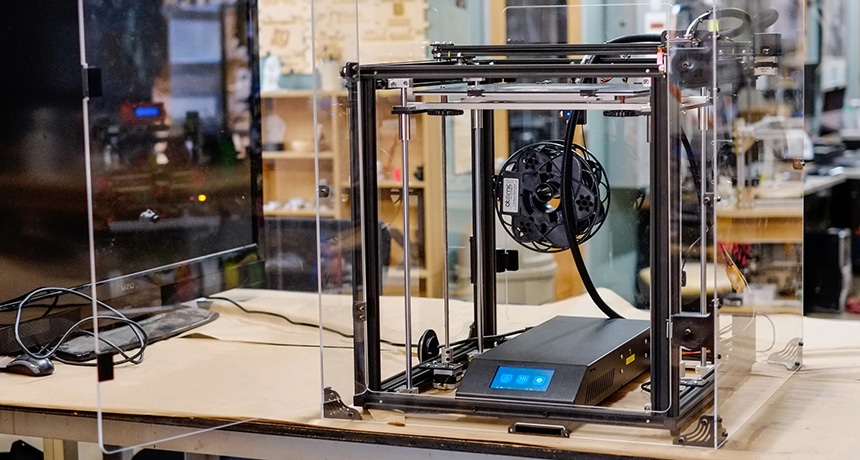
The heated plate in 3D printing helps keep the extruded plastic warm. While this dramatically improves the print quality, it also ensures that the item doesn’t warp. The heated plate or bed ensures that the model’s edges do not become uneven, which ensures that your model does not become deformed. For PLA heated plate, the temperature should be between 50 and 60 degrees Celsius. For the ABS heated plate, the temperature should be between 100 and 110 degrees Celsius.
A 3D printer is supposed to be a modern piece of equipment. As such, it should be easy to connect or share data using a computer or a smartphone. In many of the printers in our review, wireless connectivity is the norm. In the Flashforge Dreamer and da Vinci Mini Wireless, Wi-Fi connectivity is what you will use to know the filament level and control a few other functions of the printer. In the case of the SainSmart Kumitsu KL9, UI and USB port are what you should use for connectivity.
An LCD touchscreen is what almost every other manufacturer offers in its end product. The standard screen is 3.5″ even though Creality Ender 5 Plus comes with a 4.3″ LCD touchscreen. It would help if you also looked for the printer that offers user manual and good customer care. Look for a responsive machine that will not take time to install or operate. This should be especially the case if you are a newbie.
The maintenance of your 3D printer should not be challenging. The manufacturers know that filaments get finished, forcing you to go back to the market for a refill of the raw materials. Almost all of the printers do accommodate 3rd party filaments. On the other hand, if you need advice or guidance, the manufacturers have support lines always open to their customers.
The extra features that some of the printers boast of include double lead screws like in the case of Creality Ender 5 Plus. These screws are placed on the Z-axis, which then helps the hot bed become stable. In the case of Monoprice MP230, there are dual extruders which allow for duo color printing. Another cool extra feature is the filament level indicator, which in some cases can come connected to the Wi-Fi. This makes it possible to know the level of the material using your phone.
ABS – it is long-lasting and quite a strong type of material. It is usually resistant to heat, which means that your 3D printer should come with an extruder and hot bed at 225 degrees Celsius.
PLA – This type of filament becomes soft at around 50 degrees Celsius. The one good thing about it is that it is environmentally friendly and biocompatible with the human body.
PVA – This type is preferred to be used on printers that have several extruders. Such extruders provide a support structure to objects and models that don’t have any layers below them. Once printed, the object is placed in water until it dissolves completely.
Without a shade of doubt, we settle on QIDI TECH X-Plus as our editor’s choice. With a cool design, this unit weighs 50.6 lbs, offers a heated removable plate, and will give you a maximum layer thickness of 0.4mm. What’s more, it boasts of a double Z-axis platform and is backed with a 1-year warranty.
For the best home-use printer, you can’t go far off with the Creality Ender 5 Plus. This printer boasts a 4.3″ HD screen, a dual Y-axis motor, and some other amazing features. Whether you are a novice or a professional on a budget, this printer won’t disappoint.
The Dremel Digilab 3D20 is the Best Value printer. When looking for the best 3D printer, 1000, start here. The 3D printer is affordably priced and comes with a rich printing base and easy-to-follow instructions. It has an enclosed design, an LCD touchscreen, and automatic filament detection.
